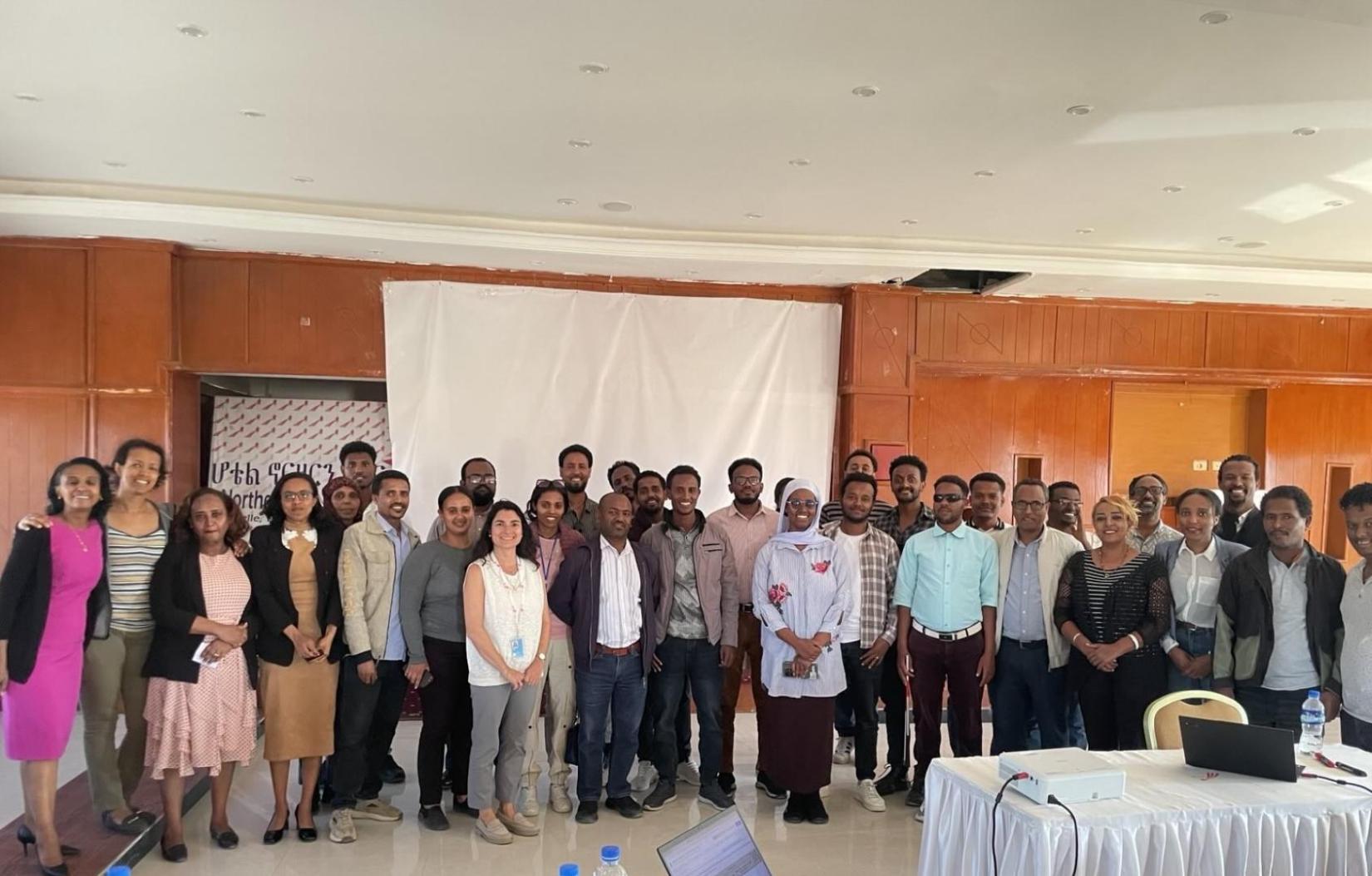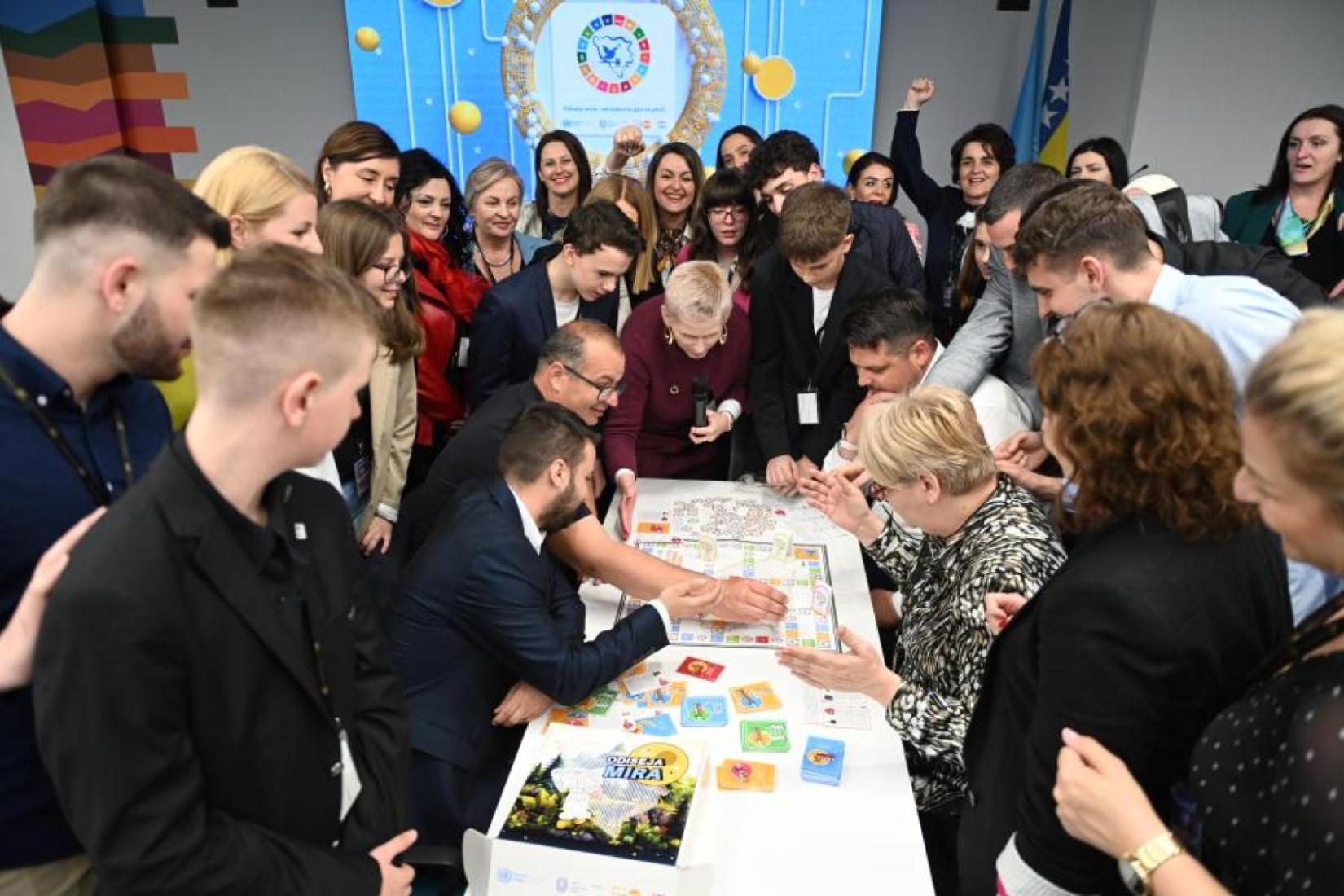Youth Building Peace for a Sustainable Future

--
For many young people, peace isn’t an abstract ideal or a political slogan. It’s personal: a daily necessity that shapes their futures. Even as conflict and violence are all too often livestreamed realities on phones and screens, young people are choosing to act. From starting dialogue in divided communities to engaging in decision-making to counter hate and disinformation, young people are taking the lead; not just as advocates, but as architects of peace.
Durable peace is the foundation for sustainable development, and development is essential to lasting peace. As the United Nations Secretary-General recently said during an open debate on Peace and Security, “Sustainable peace requires sustainable development.” The UN chief added, “It’s no coincidence that nine of the ten countries with the lowest Human Development Indicators are currently in a state of conflict.”
This is why, around the world, United Nations Resident Coordinators and the UN country teams they lead are partnering with youth to amplify their leadership. Creating opportunities for peace efforts can drive progress in education, jobs, health, secure equality and more. The work of these UN teams on the ground echoes initiatives across the Organization, including those supported by the UN Youth Office and partners. With this support, young leaders are gaining the tools and platforms they need to strengthen social cohesion and rebuild communities.
Here are five insights into youth and peacebuilding drawn from the work that UN country teams deliver for people and the planet:
1. Youth want more than a seat; they want responsibility when it comes to peacebuilding.
Cultivating Champions in Ethiopia
In Ethiopia, young people aren’t just asking for a voice in peacebuilding. They’re taking responsibility for it. With over 75 per cent of the population under the age of 30, Ethiopia’s youth hold immense potential to shape the nation’s future. Recognizing this, the UN in Ethiopia, is supporting the Ethiopian government in taking meaningful steps to ensure young people are at the heart of peacebuilding initiatives.
A major milestone in this journey is the establishment of the Ethiopian Peace Building Network, a multi-stakeholder, open platform comprised of non-governmental organizations, civil society, UN agencies, and development partners, aimed at strengthening knowledge, capacities, and collaboration for peacebuilding across the country. Under its umbrella, dedicated youth, peace and security networks have been established at both national and local levels, creating spaces for young leaders.
This movement has laid the groundwork for developing a National Action Plan on Youth, Peace and Security, which is now taking shape, led by the Ministry of Women and Social Affairs. Government institutions, civil society organizations, and international agencies are now benefitting from training on youth, peace and security and thematic studies have been carried out to incoporate these issues into the core of the nation’s peacebuilding efforts. Peace clubs in schools are training students to mediate and de-escalate conflicts. Under the Regional Youth Peacebuilding Programme with the European Union, close to 300 youth peacebuilders in Asosa and Gambella were trained in conflict mediation using the UN Refugees Agency’s (UNHCR) Peacebuilding Manual. These champions have already passed on their skills to more than 1,000 peers at the grassroots level.

2. Youth-led art and creativity are useful tools for reconciliation and connection.
Bosnia and Herzegovina, and Venezuela embrace art and play for peace
In Bosnia and Herzegovina, where the scars of war remain, music and play are becoming bridges to reconciliation and inter-generational healing. The UN’s work in the country has focused on harnessing the role of young people in this. At the UN Populatio Fund (UNFPA)-supported Music Camp for Young Virtuosos, young performers from across the country's regions — Banja Luka, Mostar, Tuzla, Zenica, Sarajevo — came together as one orchestra, proving that shared creativity can replace old divisions with trust and friendship.

Young people are also bringing peace to the classroom through a board game they designed, called “Odyssey for Peace." This game combines local heritage, peacebuilding lessons, and the Sustainable Development Goals. Developed through UNFPA’s Educational Lab for Game-based Learning and leveraging the support of the UN Peacebuilding Fund, the game will soon be a part of school curricula, making reconciliation a hands-on experience.
In Venezuela, the UN Development Programme (UNDP)-backed National Youth and Children’s Orchestras and Choirs have given over 1 million children and youth in vulnerable communities access to music training for more than 15 years. More than music and melodies, these programmes teach the values of peace, social cohesion and discipline to gold communities together. Further, events such as the Generación 2030 youth encounter, participatory workshops and consultations in Venezuela marked a significant milestone in amplifying the voices of young people across the country. A new Youth Advisory Group for the United Nations in Venezuela is helping implement and monitor work for the Sustainable Development Goals.

3. Bringing civic participation to youth requires innovative and tech-forward ways.
Fostering Digital Dialogue in Guatemala
Peacebuilding has to go hand-in-hand with civic participation. In Guatemala, young people, especially women and indigenous youth, often find limited access to formal political spaces. Digital technology offers a unique solution to break this barrier. UNDP and the Department of Political and Peacebuilding Affairs, along with the Resident Coordinator’s Office, partnered to create a digital dialogue platform: Guatemala Joven Conversa, a phone accessible AI-powered platform that enables anonymous dialogue. More than 900 youth from all 22 of Guatemala’s departments used the tool to debate electoral reform, anti-corruption, civic reform, and governance, voting on ideas in real time. This new form of engagement provides a new model for inclusive civic participation that’s efficient, low-cost, and high impact.

4. Safe spaces and champions for intergenerational dialogue are crucial for peacebuilding.
Youth Take the Lead in South Sudan
In South Sudan, the Youth Leading Peace initiative engaged 800 youth and leaders to develop the first Youth, Peace, and Security Strategy. More than 300 youth leaders have been trained and are now actively mediating local disputes and fostering social cohesion. Complementing these efforts, the Constitution Making initiative produced the South Sudan Youth Charter, outlining youth priorities for inclusion in the Permanent Constitution and ensuring meaningful youth participation in the process.
5. Empowering young women to raise their voices for peace, can help strengthen communities recovering from crises.
Putting gender at the heart of peacebuilding in Yemen
In Yemen, peace remains fragile, but young women and men are making it stronger. Through the UN Peace Support Facility, nearly 1,600 young people in Aden, many of them young women, have received grants for local peacebuilding projects. A gender network within Aden University is training women leaders who are now influencing national peace and security discussions.
Non-conventional gender-transformative jobs such as those in Aden’s Police and Family Protection units are increasingly opening to women, with active recruitment and training ensuring their perspectives are integrated into law enforcement. Gender considerations are integrated into the country’s National Youth Action Plan through the work of the Youth Inter-Agency Working Group. In communities recovering from conflict, these efforts are not only restoring safety, they’re laying the groundwork for more inclusive, resilient development backed by durable peace. The Youth, Peace and Security Pact continues to play a role in youth governance and advocacy in post-conflict settings and provides training to the police on checkpoint practices and civilian protection.

From the Margins to the Middle
When it comes to a more peaceful, just and sustainable future, youth leaders aren’t just waiting to inherit it. They are already building it, every day, with courage, care and conviction.
By equipping young leaders with meaningful platforms, training, tools and trust, the United Nations is helping sustain durable peace and elevate a new generation of changemakers.
As UN Secretary-General António Guterres reminded the Security Council in June 2025, “Peace is not built in conference rooms. Peace is built in classrooms, in clinics, in communities. Peace is built when people have hope, opportunity and a stake in their future.”
#InternationalYouthDay 2025
#IYD2025



